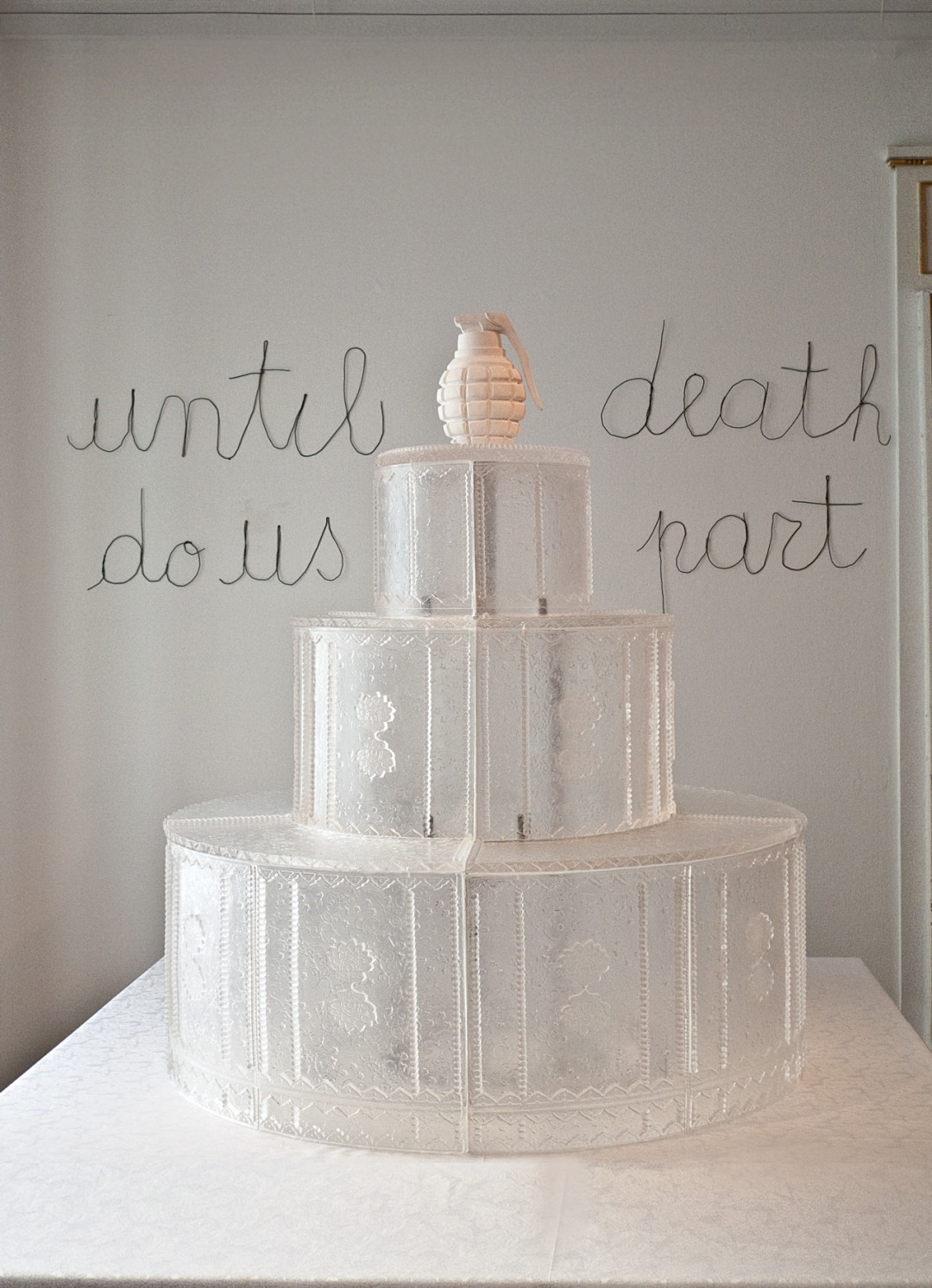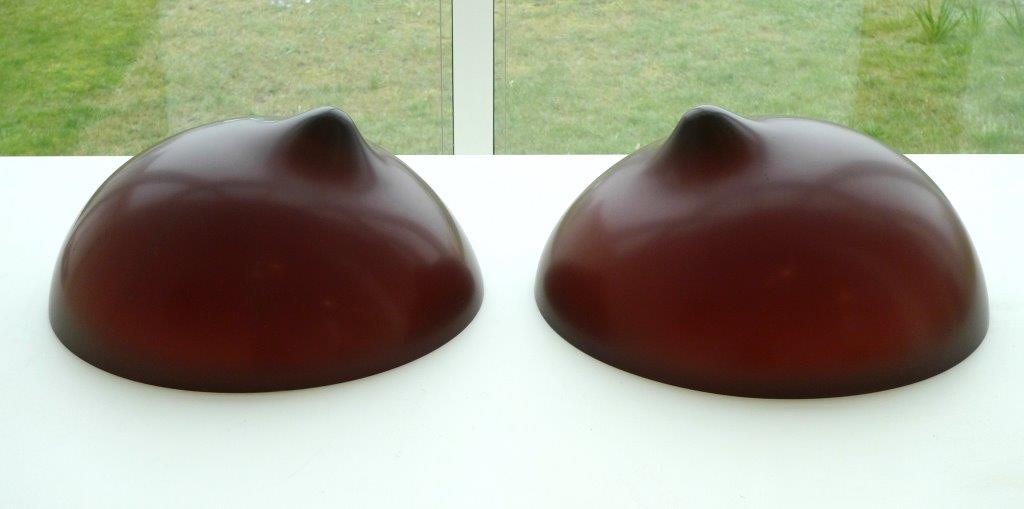Durchsichtige S/M-Lingerie, Abbildung von Geschlechtsorganen oder Vorhänge in Form eines übergrossen DNA-Codes und eine Reihe weiterer Arbeiten, die sich auf den menschlichen Körper und das Geschlecht beziehen. Die Ausstellung Body Talk im Glasmuseet Ebeltoft (Dänemark) zeigt originelle Interpretationen und persönliche Statements von insgesamt 52 Künstlern. Der roten Faden für die 80 ausgestellten Werke sind das vorgegebene Thema und das Material Glas.
Der Körper und seine Sexualität gehören allgemein zum Menschsein und zur Menschheit und sind in ihrem individuellen Ausdruck gleichzeitig einmalig. Unsere Erfahrungen und Erlebnisse mit und in der Außenwelt sind immer mit dem Körper verbunden, ebenso wie auch die Reflexion über das Geschlecht. Der Körper und die Vorstellungen davon, sind die einzige gemeinsame Referenz, bei der wir sicher sind, dass sie von allen geteilt wird. Es ist deshalb nicht verwunderlich, dass der Körper seit Jahrtausenden eine unversiegbare Inspirationsquelle in der bildenden Kunst ist.
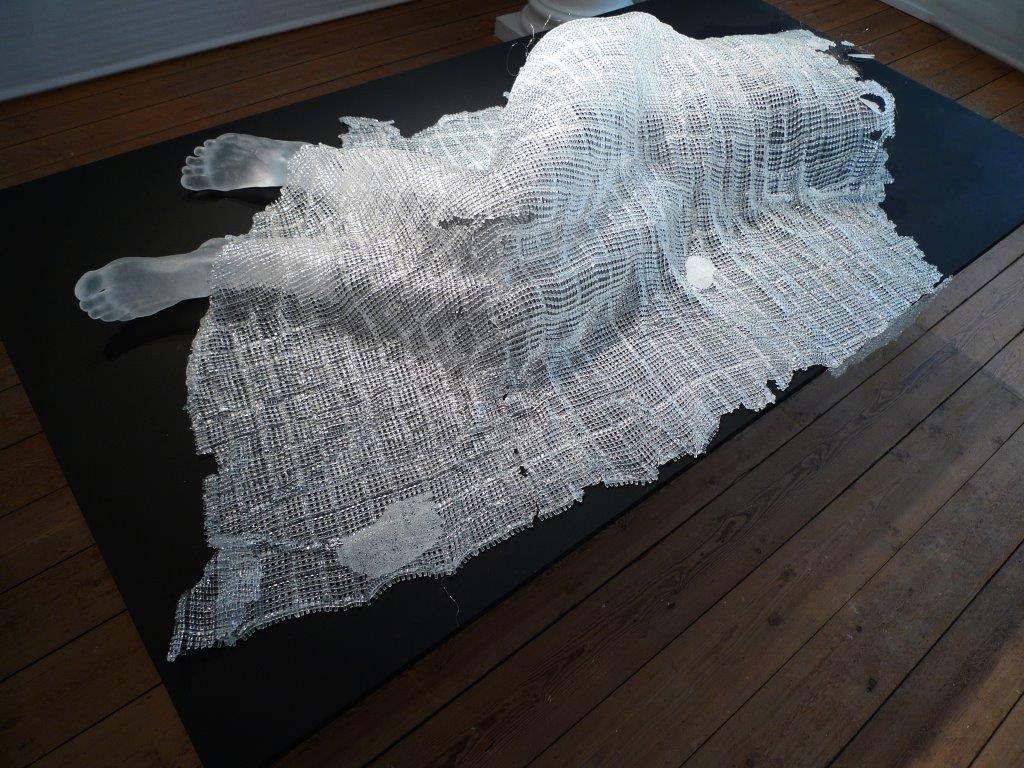
Barbara Idzikowska (Poland): Sleeping Beauty, 2013-14, cast glass, slumped glass, pate-de-verre, & video, 100 x 180 x 125cm, photo Jana Hojstričová
Einige in der Ausstellung vertretene Künstler sagen, dass sie ihre Inspiration in der Kunst der Antike hatten, in der die Darstellung des idealen und harmonischen Körpers vorherrschte. Andere verweisen auf das Studium der Renaissance, die den Menschen als Abbild der göttlichen Vollkommenheit auffasste. In der heutigen Zeit haben sich die Wahrnehmung und die Abbildung des menschlichen Körpers verändert – die individuelle Auffassung von Schönheit ist an die Stelle eines idealisierenden Kanons getreten. Bei der Mehrheit der ausgestellten Werke hört der Körper auf, ein rein ästhetisches Objekt zu sein, er wird zum sozialen Faktor und zu einem Kommunikationsmittel bei der Interpretation unserer Zeit. Der menschliche Körper wird zum Bedeutungsträger.
Viele der ausstellenden Künstler dokumentieren Konflikte in der Beziehung zwischen dem Natürlichen und Realen einerseits und dem Idealisierten und Manipulierten andererseits, sie ironisieren den Fetisch der häufig kommerziell gefärbten Illusion: Die Sehnsucht nach der Vollkommenheit des Körpers, den Traum von ewiger Jugend in Konfrontation mit der unabwendbaren Realität des Alterns und von Vergänglichkeit. Arbeiten wie z.B. von Charlotte Morrison oder Jeff Ballard verfolgen die Veränderungen im Zusammenhang mit medizinischen Eingriffen. Andere erforschen nicht sichtbare Körperteile (Lydia Boss) oder sie stellen diese in neue Kontexte (Louise Lagoni).
Inspirationsquelle der narrativen Mitteilungen sind oft persönliches Gefühl und Erfahrung inklusive feministisch motivierter Interpretation (Ina Mathiasen), oder die Erlebnisse der eigenen Sexualität (Martina Matoušková). Ein anderes Mal wählen die Künstler allgemeinere, universell gültige Themen. Sie analysieren z.B. Stereotypen in der Wahrnehmung und Darstellung des Geschlechts innerhalb verschiedener historischer (Hélène Uffren) oder kultureller Kontexte (Michal Motyčka), oder befassen sich mit der Überlappung der Grenzen von männlichen und weiblichen Elementen (Nabo Gass).
Die Artist Talks und die Performances während des Eröffnungswochenendes zeigten eindrücklich die verschiedenen Verfahren in der Arbeit mit Glas. Zugleich repräsentierten sie die für das heutige Glasschaffen signifikanten Strömungen: Eine Spannbreite von Objekten, welche von Gefäßformen ausgehen und stark mit traditionellen kunsthandwerklichen Techniken verbunden sind, bis hin zu experimentierenden multimedialen konzeptuellen Verfahren. Die erste Gruppe ist z.B. durch Lisbeth Sterling vertreten, die, ähnlich wie Nancy Sutcliffe, mit ins Glas gravierten figurativen Motiven arbeitet, während Libor Doležal mit den optischen Qualitäten des geschliffenen Glases operiert.
David Reekie tritt an das Glas rein bildhauerisch heran. Das betrifft sowohl die gestalterische Interpretation als auch das Verfahren der Lost Wax Gusstechnik. In seiner Präsentation stellt er eine neue Serie geschlechtsloser Figuren Marionette vor, die nur mit Hilfe eines Stabes aufrecht gehalten werden – eine Anspielung an die heutige gesellschaftliche Manipulation. Durch eine hervorragende bildhauerische Stilisierung zeichnen sich auch die Plastiken von Václav Cígler oder Nadege Desgenetez aus, die beide Fragmente des menschlichen Körpers darstellen.
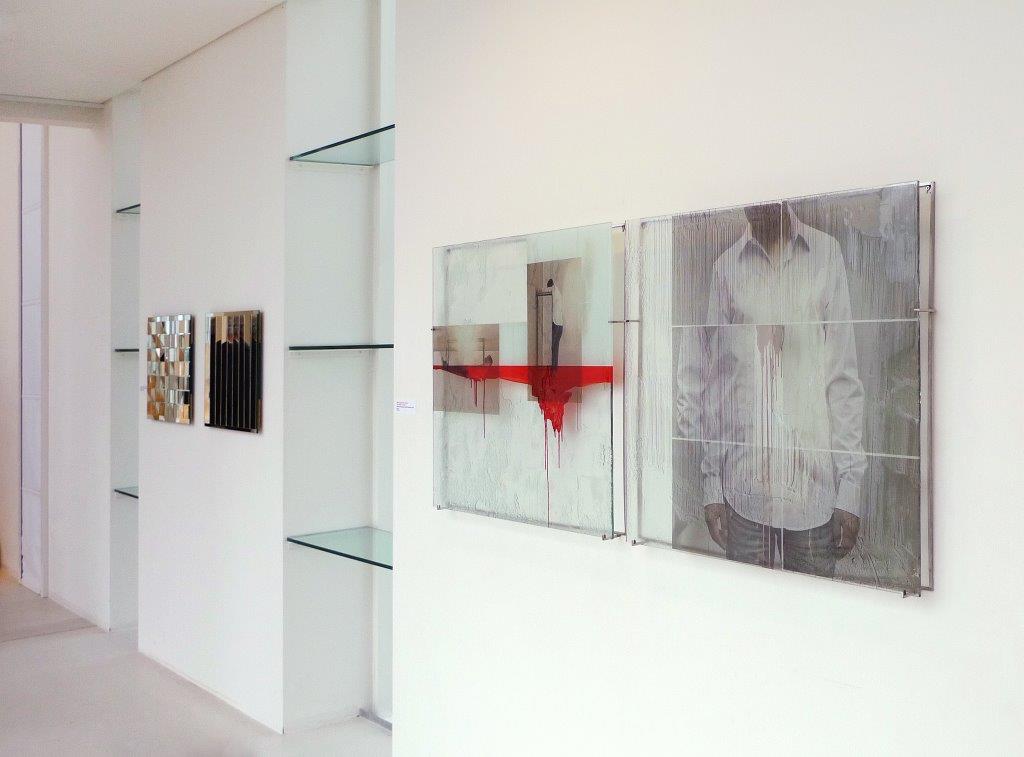
Palo Macho & Jana Hostričová (Slovakia) : From the Ground to the Ground, 2012, painted slumped glass with photo print, 100 x 80 x 2cm, 90 x 80 x 2cm, photo Jana Hojstričová
Während die genannten Künstler die einzigartige Eigenschaft des Glases und seine weiche Durchsichtigkeit ausnützen, wählt Emma Woffenden einen anderen Zugang, bei dem das Glas nur die Rolle des Kontrast-Akzentes spielt. In ihrem artist talk hat sie beschrieben, wie sie ihre Skulpturen aus gewöhnlichen Materialien wie Pappmache oder Kunststoff zusammenstellt, aber auch solchen, die sie einfach am Strand gefunden hat. Inhaltlich befasst sie sich mit der Analyse von Sexualität heute, die oft mit Gewalt in Kombination mit Glauben, Krieg und sozialen Konflikten verbunden ist. Ähnliche Themen der häuslichen Gewalt an Frauen hat auch das grosse eye-catching-Objekt von Silvia Levenson.
Barbara Idzikowska zeigte in ihrer Präsentation und im Video das Entstehen ihrer mehrteiligen Installation Sleeping Beauty. Sie arbeitet mit dem Abdruck von einem lebendigen Körpers und stellt in der surreal wirkenden Komposition die Vergänglichkeit und Relativität der Schönheit dar, die heute nur mit trivialen Attributen verknüpft wird. Mit den Abdrücken des eigenen Körpers, gepresst in eine Ecke des Ateliers, arbeitet auch Rui Sasahi. Die Installation aus Glasgusselementen ergänzt sie mit Fotografien und Aufzeichnungen, die ihre Empfindungen während der Aktion dokumentieren.
In der Ausstellung sind häufig interdisziplinäres Schaffen und die Anwendung weiterer Medien aus der visuellen Kunst wie Fotografie und Video vertreten. Ein Video kann das finale gestalterische Produkt sein, das die stattgefundene Performation aufzeichnet (Maria Bang Espersen, Boris Shpeizman) oder eine ästhetisch interessante Dokumentation des Arbeitsverfahrens. Ähnlich kann die Fotografie einen Dokumentationscharakter haben, oder sie wird zum direkten Bestandteil des Werkes. Hier zu erwähnen, stellvertretend für andere, sind die Reliefs von Palo Macho, in die als ein integraler Bestandteil Jana Hojstričovás Fotografien hineinkomponiert sind und bei denen das finale Kunstwerk aus dem Dialog beider Künstler entsteht.
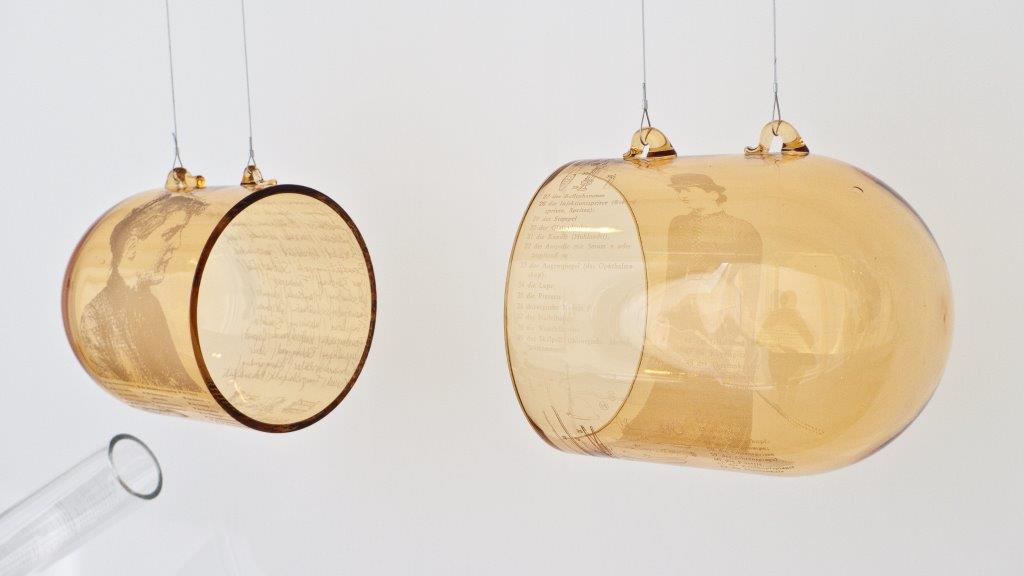
Katrin Maurer: Part of the Installation The Spectacle, 2006, blown glass, sandblasted with images (photosensitive print), steel wire, 18 x 26 x 18 cm, photo Jana Hojstričová
Alexander Rosenberg stellte sich in seinem artist talk vor allem als Konzeptkünstler vor, der sich in verschiedenen Medien ausdrückt. In einer humorvoll gestimmten Installation ordnet er verschiedene Glasgegenstände so an, dass sie eine Silhouette seines eigenen Körpers bilden wobei ein „vergessener“ Bleistift auf dem Overheadprojektor sich in einen erigierten Penis verwandelt. Rosenberg hat hier eine Reminiszenz aus seiner Kindheit mit der Plastik von Marino Marini verarbeitet.
Viele Zuschauer waren am Eröffnungswochende auch durch die Performation von Marie Bang Espersen in der Glaswerkstatt des Museums fasziniert, in der sie sich mit den Beziehungen zwischen dem Körper und seiner Umgebung und dem menschlichen Atem und dem Glasblasen befasst hat. Die Performation des mehrköpfigen Teams wurde von einer Tonaufzeichnung des Atems und Musik begleitet.
Auch dieser Auftritt rief eine lebhafte Diskussion über die Ausstellung in den dänischen Medien hervor. Die Arbeiten provozierten nicht etwa durch ihren Inhalt; man sprach vor allem über die Stellung von Glas innerhalb der Disziplinen der bildenden Kunst. Dabei ist eine Verschiebung von der traditionellen Glasverarbeitung zur multimedialen Auffassung hin offenkundig. Es entstand aber die Frage, ob die Existenz eines auf Glas spezialisierten Museums, wo der Besucher auch die Traditionen der handwerklichen Techniken und Voraussetzungen kennenlernen kann, nicht kontraproduktiv sein könnte, wenn man das Glas als gleichwertiges Medium des künstlerischen Ausdrucks ansehen will. Die Ausstellung Bodytalk zeigt, dass das nicht so ist.
Pavla Rossini
Dr. Pavla Rossini, freie Kuratorin und Kunstjournalistin in Kopenhagen, Dänemark und Prag, Tschechische Republik.
Übersetzung ins Deutsche: Marta Neracher-Altrichter, MA
Silvia Levenson: Until Death Do Us Part, 2013, kiln formed glass, metal, 110 x 120 cm, photo Jana Hojstričová

